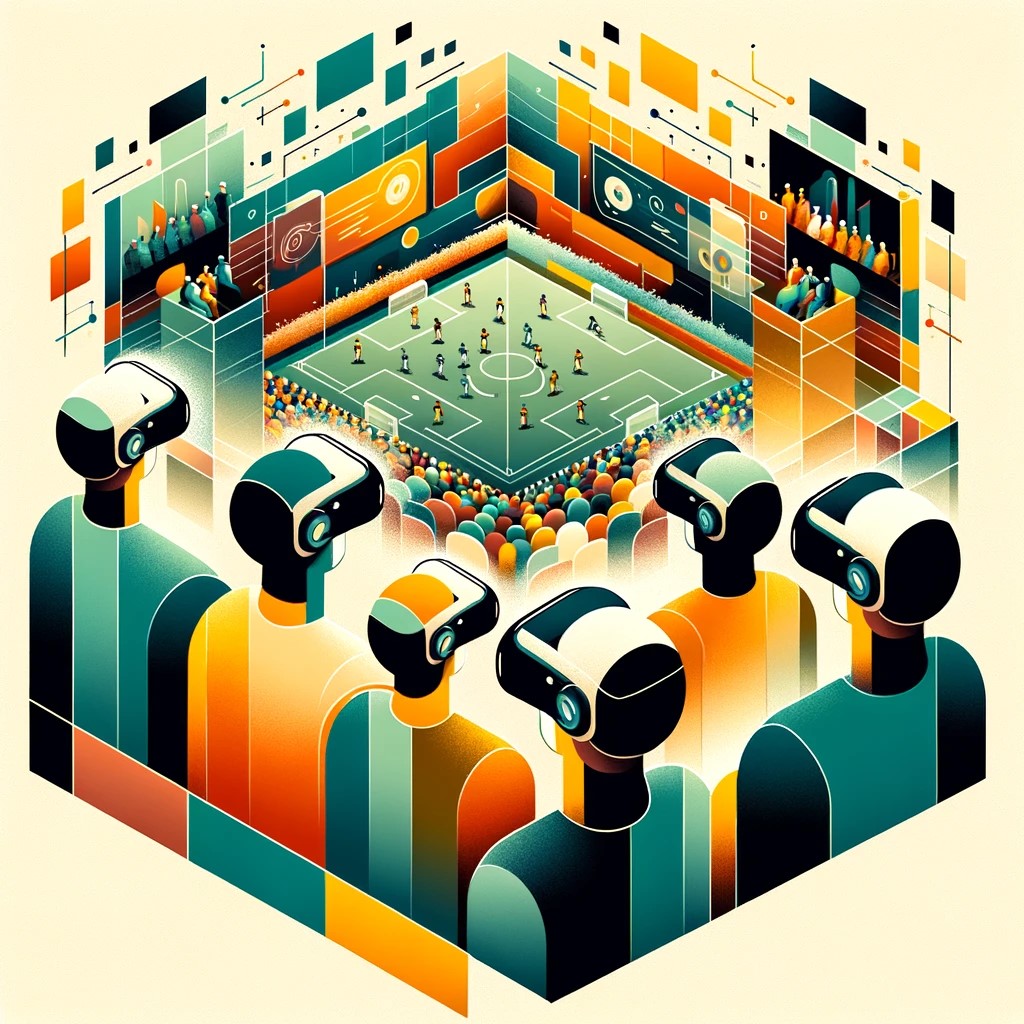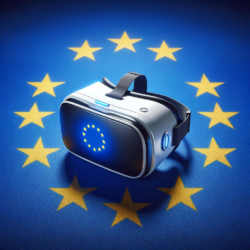
From the Stands to the Virtual Arena: How VR Is Redefining the Fan Experience
With the recent launch of mixed-reality headsets by major technology companies, virtual reality is back in the limelight. Although most reviewers agree on the impressive technical abilities of the newest hardware, the question remains what role will VR play in our daily lives once the initial excitement has worn off? Whereas all big players seem to emphasize the way VR, or spatial computing, will change the way we work, it remains highly uncertain if users actually agree that working in a virtual office with five screens will increase their productivity, or meeting in a virtual environment will make them feel more connected to their colleagues than an old fashioned video call.
One area where most critics and users, including yours truly, do agree, is that VR glasses provide a clear added benefit over other screens for entertainment–truly providing an experience that makes it worth putting on the somewhat clunky glasses, instead of simply turning to your TV or laptop. This begs the question of what potential VR holds for the pinnacle of entertainment: sports.
The sports entertainment market certainly seems ready to be disrupted. Compared to how we work, communicate, and consume other types of content like video games, the way we enjoy sports hasn’t changed significantly since the first sports game was live broadcasted over eighty years ago–a college baseball game between the Columbia Lions and Princeton Tigers in 1939, in case you’re interested. Yes, sports broadcasts have become much more accessible since then, and we can now stream a game on our phones wherever we are, but the format hasn’t changed much: We are still dependent on the director’s decisions about the highlights we see, and the camera angles we see them from. And, whether we like it or not, the commentary we listen to comes at the cost of hearing what happens on the pitch and in the stadium.
It also doesn’t take much imagination to see how VR has the potential to take the fan experience to a higher level. For instance, who wouldn’t love to watch a game from their couch while being able to virtually take a front-row seat in the stadium? You could potentially even sit down next to your friends, who might be on the other side of the world, and enjoy the game together. Sounds good, right? This scenario is much less futuristic than you might think.
For instance, NBA fans already have the opportunity to experience games this way. Yes, so far there’s only a limited number of basketball games available, but with Big Tech committing to VR, it only seems like a matter of time before the options are expanded.
It only requires a little imagination to see the potential for not only consumers but also for sports teams and brands. Teams can only sell a limited amount of tickets for their games in the physical world, but the number of tickets for a virtual stadium is infinite. Consumers have also been very willing to pay real money for virtual goods, and selling team merchandise for your virtual stadium visits is of course a no-brainer.
Advertising at global sports events is currently only an option for a small group of companies with a multimillion Euro marketing budget. But what if the advertising you see around the pitch during a football game could be highly targeted and personalized? Or what if your team’s jersey could carry the name of a brand that appeals personally to you, instead of some random insurance company? These possibilities might still sound far away, but on the other hand, you could argue that advertising has been a key driver in technological innovation, and Big Tech sure knows a thing or two about personalized advertising.
Whether the above scenarios will actually materialize will, to a large extent, depend on the general market adoption of VR. Sports has the potential to become one of the strongest use cases for the technology, but it won’t be a sufficient use case for mass market adoption. Still, I for one, can’t wait to put on my virtual scarf and jersey and cheer on my team up close from wherever.
RELATED ARTICLES





